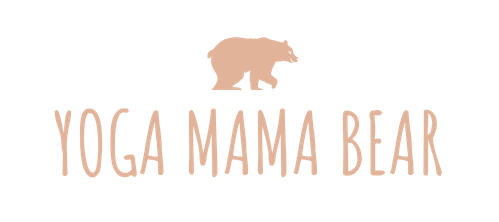Our poor body image is an illusion
(Photo by Cecilia Paredes. Source)
Did ya hear about avidyā?
I was first exposed to avidyā in yoga school, and it’s a concept I’ve been infatuated with ever since. Avidyā is one of the five klesas (sources of suffering) outlined in the Yoga Sutras of Patanjali, and it's the Sankskrit word that means ignorance or delusion. It’s our misunderstanding/mistranslation of ourselves and of the world, which causes suffering and poor habits.
During the lecture on avidyā, my teacher told a common story about a snake and a stick to exemplify the philosophy. In this story, you’re walking along a path when you see a snake ahead. Fear arises. You begin to feel anxious, anticipating pain and suffering. Perhaps even death. As you edge closer to the snake, laden in fear, you realize it’s just a stick. What you perceived as reality — the snake, pain and even death — was an illusion.
Everything is a stick.
Huh? Let’s dive deeper ...
I’m taking Sadie Nardini’s “Rockstar Teacher Training” online (P.S. she’s rad), which includes a section about “Dissolving Samskaras” (habits). In this section she lectures about avidyā, and boils it down in a meaningful and succinct way:
“Everything is neutral until we assign a story to it. Then we take it one of two ways — we empower ourselves or we disempower ourselves."
Everything is neutral. Everything is a stick.
This is hard to digest. Mostly because we are stubborn. And, convince me I'm wrong if you feel differently please, but I don't believe EVERYTHING is neutral. I believe some things, some horrible things in this world, are not neutral. But for the most part, things that stress us out on a regular basis are neutral. I can get on board with that. When we convince ourselves of a reality, it’s difficult to change that perception. Our ego gets in the way — it doesn’t like to be wrong.
Let’s apply this to body image.
Say we catch ourselves in a poor body image moment. (Been here before?) Or maybe it’s lots of moments. Perhaps it consumes our thoughts. Fear drives destructive habits (samskaras) such as over-exercising or yoyo dieting or even spiraling toward addiction; an eating disorder. Fear brought us here. Fear of what though? Likely, fear of acceptance. This is avidyā; an illusion; a lie we’ve made our reality.
Will people really accept us if our body transforms into our picture of “perfect”? Probably not. Some people will accept us and some won’t, no matter our size.
This makes sense, yeah?
The size of our body is neutral until we assign a story to it.
So let’s say we gain 15 pounds. That is what is. It’s neutral. The number on the scale is neutral; it's a stick. We can then choose the story we assign to it.
We could choose to assign a story to it that leads to self-destruction. We could choose to believe we are worthless, ugly and that we must kill ourselves in the gym and starve until we lose this weight. Our motivation here is based on the illusion that the weight we’ve gained will lead to not being accepted, and that we must be accepted in order to be happy. We’re choosing to turn something neutral into a source of stress and anxiety. We’re choosing the disempowered path.
Or we could choose the empowerment path. We could be curious about how we got here, investigating the stick/snake/what is with an open mind.
Let’s see ...
I’ve been eating a lot of takeout food lately. I haven’t been working out and I haven’t been getting enough sleep.
By realizing the actual source of what is through a curious and open mind, we can begin to create new habits to change our story. I’m going to cool it on takeout and prioritize my workouts and sleep.
Or maybe the curiosity leads us here: I feel good and I’ve been honoring my body. I gained 15 pounds, but I feel great; so I’m not going to let that number create negative thoughts.
And (this is where it really gets good) curiosity takes us deeper. Why do I long to be accepted by others? Who are the “others” I am seeking approval from and why is it so important to me?
This is powerful. This is understanding who we are, why we think the way we do and then putting a pen in our hand to rewrite our story.
Being a yogi is much more than the asana — the physical practice. Being a yogi means being curious. It means we’re always seeking to understand and discover our true selves. Because the more we understand ourselves, the more we can give the world.
If we’re in the habit of focusing on the “worst case scenario,” that’s the story we’ll live in. It becomes the habit and the easier route. But the great truth is that we can choose again. We can choose to rewrite our story and empower ourselves to create new habits.
It’s challenging to begin. The habitual path is wide. It’s easier to travel on because it’s established; the path has turned to flat dirt that’s easy to travel on. The path we’d like to choose to take is harder to walk on, because it’s been neglected. It’s overgrown and we have to jump over the tall grass. But the more we walk on this path, the easier it gets. The ground gets worn down by your tread until this new path is just as flat and wide as the old one.
Body image. Intimate relationships. Friendships. Work. Money. Avidyā (delusion) can cloud our thinking in every area of our life. Let’s choose the empowered path and take our stories in our own hands.
